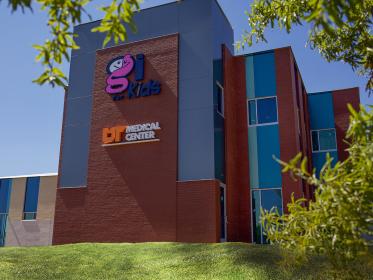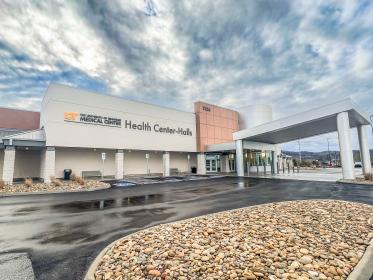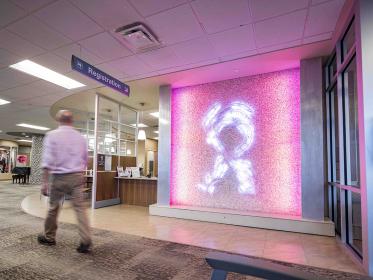Overview
Magnetic resonance imaging (MRI) of the breast is a common medical test. It detects breast cancer and other breast conditions. A breast MRI takes layered images of your breast. A computer combines these images and turns them into detailed pictures.
Doctors usually order a breast MRI after you have a biopsy that’s positive for cancer. They give your doctor more information about the extent of the disease. Sometimes, like if you have a high risk of breast cancer, your doctor may order a breast MRI along with a mammogram. Together, these are an effective screening tool for detecting breast cancer.
What Is a Breast MRI?
An MRI is a noninvasive medical test, which means that it doesn’t break the skin. It helps doctors diagnose and treat illness and disease. MRI uses a strong magnetic field, radio frequency pulses, and a computer to take pictures of the body. It can make detailed pictures of almost anything inside your body, like organs, soft tissues, bones. MRI does not use radiation, like x-rays.
MRI of the breast gives your doctor important information about many breast conditions. It works well for conditions when other tests don’t, like mammograms or ultrasound.
Why Would my Doctor Order an MRI?
A breast MRI doesn’t replace mammograms or ultrasounds. Instead, it’s used in addition to them. Here are some reasons your doctor might order an MRI.
If you have a high risk for breast cancer.
If you have strong family history of breast cancer, your doctor may order a breast MRI to screen for it. Your radiologist or primary care doctor can look at your family history and decide if a screening MRI is right for you.
To find out if your breast cancer has spread.
If you’ve just been diagnosed with breast cancer, your doctor may order a breast MRI to stage the cancer, or see if it has spread. For example, it can show if the cancer is in the underlying muscle, how many tumors are in the breast, whether there is cancer in the opposite breast, and if it’s spread to the lymph nodes.
To learn more about a hard-to-assess abnormality shown on your mammogram.
Sometimes mammograms and ultrasounds can’t show you everything about your condition. In these rare cases, doctors use an MRI to determine if you need biopsy or the issue can safely be left alone.
To track your lumpectomy sites after you’ve had breast cancer treatment.
If cancer comes back, it can look like scars on a mammogram or ultrasound. So, if your scars change, MRI can tell your doctor whether the change is normal, or the cancer has come back.
If you’ve had neoadjuvant chemotherapy.
This means you had chemo before surgery to remove the tumor. In these cases, MRI can show how well the chemotherapy is working. It can also show how much of the tumor is still present before you have surgery.
To evaluate breast implants.
MRI is the best test for determining whether silicone implants have ruptured.
What Should I Expect During my Breast MRI?
Breast MRI examinations require the patient to receive an injection of MRI contrast material into the bloodstream. The traditional MRI unit is a large cylinder-shaped tube surrounded by a circular magnet. You will lie on a moveable examination table that slides into the center of the magnet. The computer workstation that processes the imaging information is located outside of the scanner room.
Most MRI exams are painless. However, some patients find it uncomfortable to remain still during MRI imaging. Others experience a sense of claustrophobia. Patients who anticipate anxiety can request medication from their ordering physician to get through the exam. You will be given earplugs to reduce the noise of the MRI scanner, which produces loud thumping and humming noises during imaging.
Do I Have to Stay Still During the Test?
Yes, you should stay as still as possible during the test. The technologist will position you on your stomach and may use bolsters to help you stay still and hold the correct position during imaging.
For an MRI of the breast, you will lie face down on a platform specially designed for the procedure. Openings in the platform make room for your breasts and let them to be imaged without compression, or pressure. The electronics needed to capture the MRI image are actually built into the platform. It is important to remain still throughout the exam, so make sure you are comfortable and can relax. Be sure to let the technologist know if something is uncomfortable, since discomfort increases the chance that you will move during the exam.
Will I Have Contrast for the Test?
A nurse or technologist will insert an intravenous catheter, also known as an IV line, into a vein in your hand or arm. The technologist will do the examination while they work at a computer outside of the scanner room. They will take the first series of scans and then inject your IV line with contrast material. The machine will take more images after the injection. When they finish the exam, they may ask you to wait until the technologist or radiologist checks the images. This will let them take more images, if needed. Once they have the images they need, the technologist will remove your IV line.
MRI exams generally include multiple runs, some of which may last several minutes. The imaging session lasts 30 minutes to an hour.
Who Interprets the Results and How Do I Get Them?
A breast radiologist, a physician specifically trained to supervise and interpret your examination, will analyze the images and send a report to your primary care or referring physician, who will share the results with you.
Follow-up examinations may be necessary, and the University Breast Center will contact you and explain why another exam is requested. Sometimes your doctor will ask for a follow-up exam, because they need clarification on an image. They do this with additional views or a special imaging technique.
What Are the Benefits Versus Risks?
As with many medical tests, MRIs cary both benefits and risks. For example, here are some of the benefits:
- MRIs are noninvasive imaging techniques that don’t expose you to ionizing radiation.
- They help find and stage breast cancer. Staging tells how far it’s spread. MRIs can help when other information is needed in addition to other imaging studies, like mammograms or ultrasounds.
- If you have a high risk of breast cancer, a breast MRI, done with a mammogram, can tell your doctor more about your breast health.
- They’re better tools for women with dense breast tissue or breast implants. It can be hard to get clear pictures of both of those with a traditional mammogram.
- If a mammogram shows a suspicious lesion, MRI can provide guidance for biopsy.
- The contrast material used in MRI exams is less likely to produce an allergic reaction than the contrast used in x-rays and CT scans.
In addition, here are some of the risks:
Risks
- If you don’t follow the medical team’s safety guidelines, you might be at risk.
- If you have a implant or other metal in your body, like shrapnel, it could cause problems during an MRI exam.
- There is a slight risk of an allergic reaction to contrast material. Such reactions usually are mild and easily controlled by medication. If you experience allergic symptoms, a radiologist or other physician will be available for immediate assistance.
- Patients with poor kidney function could have a complication called nephrogenic systemic fibrosis. High doses of gadolinium-based contrast material can cause this rare complication. Your doctor will carefully assess your kidney function before suggesting you get a contrast injection.
- If you’re breastfeeding, the makers of the intravenous contrast say you shouldn’t nurse your baby for 24-48 hours after you’re injected with contrast. However, data from both the American College of Radiology and the European Society of Urogenital Radiology shows that it’s safe to breastfeed after receiving intravenous contrast.
What Are the Limitations of MRI of the Breast?
A breast MRI can tell your doctor more about your breast cancer or breast cancer risk. But the tests do have some limitations.
For example, they can only take high-quality images if you remain perfectly still during the test. If you’re anxious, confused or in severe pain, it might be hard to lie still during imaging. Here are some other things that might affect your test:
- A person who is very large may not fit into the opening of certain types of MRI machines.
- Implants or other metallic objects sometimes make it hard to get clear images.
- If you’re in your first three months of pregnancy, your doctor will probably advise you not to have an MRI, unless it’s medically necessary. There’s nothing that shows an MRI will harm the fetus, but this will ensure the safety of you and your baby.
- An MRI may not always tell the difference between cancer tissue and fluid, known as edema.
- MRIs cost more and may take more time to perform than other imaging tests.
- Sometimes a benign, or non-cancerous, piece of tissue in the breast can show up as a bright spot on the image. Often, the radiologist can tell by the way it looks whether it is cancer or not. When they can’t, your doctor may another test, like an ultrasound or a biopsy. If cancer doesn’t show up on those tests, it’s called a false-positive test result.



